This post may contain affiliate links. If you click through a link and make a purchase, I may receive a commission at no additional cost to you. As an Amazon Associate, I earn from qualifying purchases. Read the full disclosure here.
Cardio is hardio. For real, exercise is uncomfortable. It’s no wonder so many people don’t like it. Unfortunately, no one is handing out healthy lifestyles for binging on Netflix or surfing your Facebook feed. Bummer.
Whether it feels like it or not, our bodies crave movement.
I love exercise. I love how it makes me feel physically and mentally. If I miss a workout, it feels like something is missing. But I didn’t get this way overnight.
Now before you decide that I’m just one of those people, I’m not here to lecture you on how to be like me.
As a physical therapist, I’ve worked with thousands of people of all fitness levels to improve their movement, health, and quality of life. Many didn’t like exercise but saw how much it improved their quality of life and were willing to make a change.
I want to share ways to be more physically active to support your lifestyle and make your body feel good, even if you don’t like exercise.
So let’s get to it!
Disclaimer: This content is for educational purposes and is not medical advice. Read the full disclaimer.
Why it’s important to be physically active
It’s no surprise that most people aren’t getting the recommended amount of regular physical activity. According to a recent report by the CDC, only 23% of Americans get enough exercise.
That’s astoundingly low. Let’s give that a moment to sink in.
This isn’t just about exercise. If you’re not physically active, you’re setting yourself up to lose on many health-related fronts.
Benefits of exercises for a healthy lifestyle
Regular exercise decreases the risk of all-cause mortality. It’s good for everything.
Many top diseases (like heart disease and diabetes) have modifiable risk factors that can be significantly improved through diet and exercise.
Exercise also helps you stay mobile throughout your lifespan, avoid chronic pain, and even improve your mental health.
(You can thank me when you’re a proud, independent 80-year-old living your best life.)
Sadly, many put exercise on the back burner (or not even on the stove) and take medication to merely continue an unhealthy lifestyle.
Being active is a necessity for overall health. Movement helps all systems of the body to work better, from muscles and joints to circulation and digestion.
We shouldn’t fear exercise and movement. The truth is, not moving has far worse consequences.
No one ever has goals to take ten different medications or become so immobile that they can barely walk upstairs to bed or the bathroom. Yet these things happen over time to many who lead a sedentary lifestyle.
The bottom line, if you hope to live a long, enjoyable, healthy lifestyle, you need to stay active.
What is the recommended amount of physical activity?
How much physical activity do you need to get substantial health benefits from exercise?
- At least 150 min of moderate-intensity exercise or 75 min of vigorous activity per week
- Strength training for all major muscle groups at least 2 days per week
- Additional health benefits are gained when increasing aerobic activity to 300+ minutes per week
Don’t let these numbers scare you.
Moderate aerobic activity means getting your heart rate up (which is why 10,000 steps without any clarification of intensity or hours of stretching don’t automatically equal exercise.)
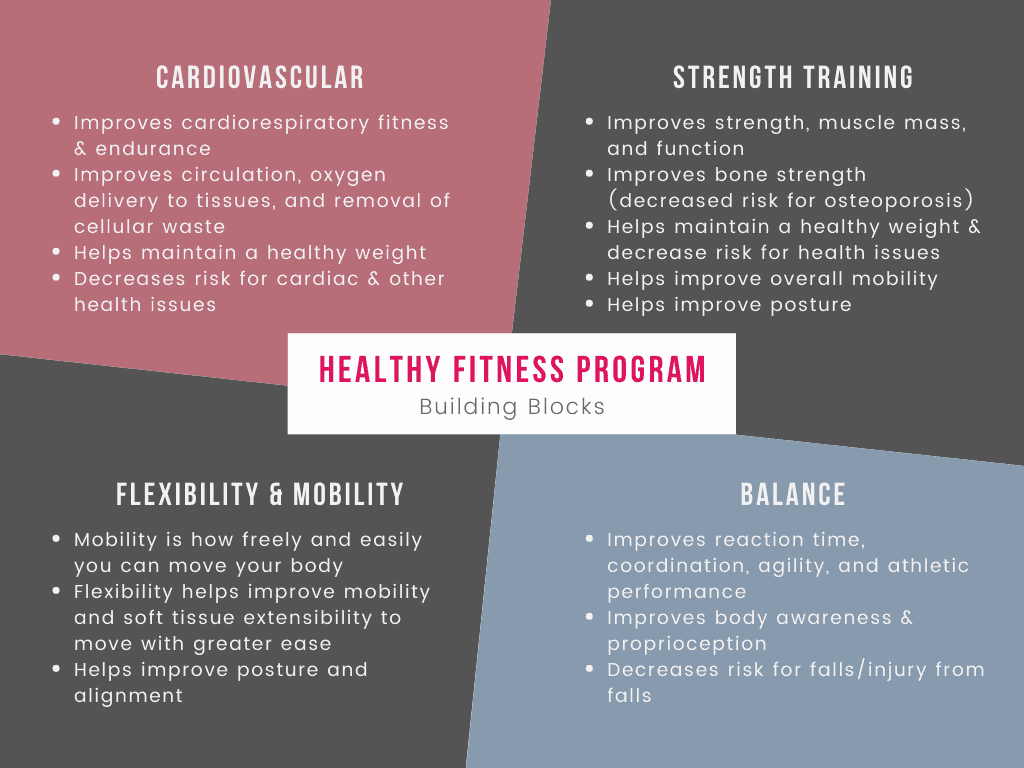
Be honest with yourself about your intensity if you expect to see results.
One of the easiest ways to track your physical activity is to use a fitness watch. Check out my in-depth article on how fitness tech works and which ones are the best!
Activity vs. exercise
Activity and exercise are often used interchangeably, but they’re not exactly the same thing. Exercise is activity, but not all activity qualifies as exercise.
Activity is movement produced by your skeletal muscles that require energy.
Exercise is repetitive and intentional movement with the goal of improving overall fitness.
Both are important to maintain a healthy lifestyle.
Unpopular opinion: If you hate exercise, you haven’t found what works for you.
Let’s break it down a little more. Why do you hate exercise?
- Are you bored?
- Do you always get hurt?
- Do you hate certain types of exercise?
- Do you hate public gyms?
- Did you have a bad experience surrounding something related to exercise?
Great news, you don’t have to do activities you don’t like. Don’t fit yourself into activities. Find activities that suit you.
Unpack that bag of exercise issues and refill it with activities that fit your lifestyle. Check out 18 Low Impact Workout Options to Keep You Moving for some fitness inspiration.
The human body was programmed to crave movement.
The less you move, the more awkward and uncomfortable movement feels. So the response is to move less. Now repeat this cycle until almost all movement feels uncomfortable, leading to movement avoidance.
Avoiding movement leads to increased pain and stiffness, loss of strength, loss of function, and overall quality of life.
The only solution is to move appropriately in small steps.
Delayed onset muscle soreness (DOMS) is a reality and normal response to exercise.
Of course, there will be temporary moments of discomfort and challenge with any exercise that will provide change, but if you’re feeling pain and are laid up for several days after, you need to rethink your activities.
Ways to become more physically active throughout the day
In addition to exercise, you should generally be looking to sit less and move more to raise your baseline activity level.
Opportunities to be more active are all around if you’re looking for them. These small wins add up to a big win at the end of the day, week, or month.
Fun pandemic fact, I noticed from my Apple Watch stats that I burned several hundred calories less on days I didn’t leave the house. Even the act of going grocery shopping burns more calories than sitting on the couch.
Let’s say it’s 200 extra calories for simple math sake. That may not sound like much, but multiply that by 7 days per week, and now that’s 1400 extra calories. We can take that a step further and multiply that by 4 weeks, and now that’s 5,600 extra calories burned. Not too shabby for “just moving.”
See how those seemingly small amounts of activities can add up to something bigger?
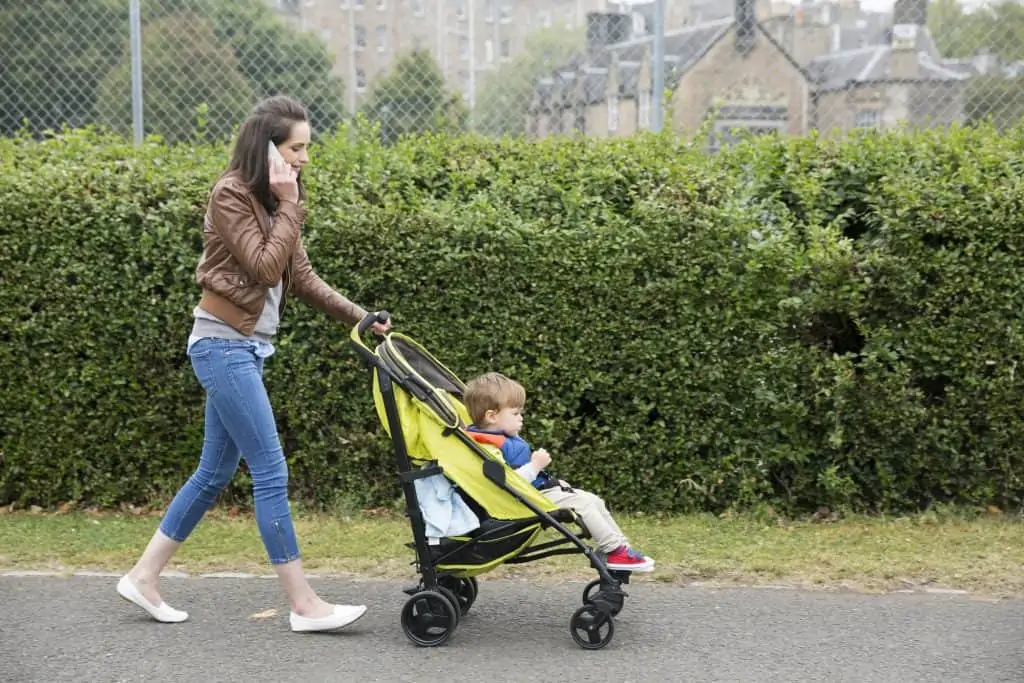
Here are some ideas to be more physically active throughout the day outside of exercise time:
- Park further away
- Go for a brisk walk
- Take the stairs
- Use the further bathroom
- Sit less, move more: avoid sitting for more than 30-45 min at one time
- Set small activity goals throughout the day
- Use a fitness tracker with reminders to move
- Participate in a virtual activity challenge (e.g., Steps per day)
- Walk around while you’re on the phone
- Work on flexibility and mobility while watching TV
- Do some power cleaning or decluttering
- Do yard work
- Walk your dog
- Play with your kids
- Dance to your favorite song
- Do an extra lap at the mall or other large stores like Target and Walmart
- Walk to nearby stores instead of driving
Tips to build a healthy active lifestyle
There’s so much information out there that starting to be more active can leave you with analysis paralysis.
You don’t have to focus on everything at one time. Start slow and add gradually.
Set specific fitness & health goals
It’s easy to cop out on vague goals. Specific, meaningful goals, not so much.
Call them activity goals or health goals if that helps you get into the right mindset.
Lack of meaningful goals or unrealistic goals is a huge reason why people fail at exercise programs. The more you fail, the easier it is to avoid trying new exercises or start to hate exercise and think it’s just not for you.
Your goals need to be realistic in terms of time frames and your ability to work toward them.
Example of a vague fitness goal: I want to exercise more.
Sweet. So does everyone else this January. What’s your plan?
Example of a specific fitness goal: I want to consistently workout twice per week. Tuesdays and Saturdays work best for me, so I’ll make sure I prioritize activities for those days. I’ll block out time on my calendar, so I don’t forget. If something comes up, I can reschedule for another day.
Now that’s how you’re going to reach your goal!
Read How To Actually Reach Your Fitness Goals for more tips and crucial questions to consider that most people forget to ask.

It’s ok to start small – but stay consistent
Small changes over time make a big difference.
In the beginning, it may be difficult. You might feel tired or sore and not be seeing any benefits or results yet. But give it a few weeks to a few months and start noticing how you feel.
- Are you sleeping better?
- Are everyday tasks becoming easier?
- Do you feel stronger?
- How does your body feel?
Steady and sustainable wins the race.
Try a fitness class
I know, the thought of entering a room of people who like exercise might sound like the opposite of fun, but hear me out.
Fitness classes can help you stay consistent with regular physical activity by committing to a time and removing barriers like having to think up your own workout.
Some people enjoy that group comradery feeling, and others just participate in the workout and sneak out when they’re done. Don’t let group fitness scare you! You’re not required to make friends with everyone.
Try workout apps
If you’re a hard no on the group fitness but still want a done-for-you workout, fitness apps might be for you.
Workout apps can be a fun and motivating way to get a short workout, even if you can’t get to a gym. Some even allow you to set reminders on your phone or schedule workouts to keep you stay accountable.
Most feature a wide variety of fitness activities so you can try new things in the privacy of your own home and find activities that speak to you.
Give these crowd favorite workout apps a try:
Don’t forget to check out my full review of Aaptiv to learn why I think it offers some of the best variety and value for your money.
Workout apps make it more convenient than ever to access any type of fitness program on demand. They remove typical barriers like I can’t get to the gym or I don’t know what to do for a workout.
Sometimes just pressing play on a workout is enough to get you moving.
Don’t chase aesthetic goals
Another reason why people fail at fitness is chasing aesthetic goals.
I feel you. It can be very discouraging when you don’t see results.
In reality, it can take a very long time to achieve a certain look, if at all. This is not to purposefully discourage you. It’s just that everyone’s body and genetics are different.
Also, simply looking a certain way does not automatically indicate good health. Focus on how your body feels instead.
Don’t compare yourself to others
This is very hard to do primarily because of how fitness is portrayed on social media, but the great thing about exercise is that there’s always a way to meet you where you’re at.
You’re not losing just because you’re not where someone else is.
Focus on yourself, your goals, and what feels right for your body.
Find your people
Many people are intimidated by gyms, studios, and workouts for fear of not fitting the mold. I won’t lie. Some gyms and studios do come with an attitude that can be very off-putting. But that’s their problem.
Don’t be afraid to try new places and find where you feel welcome.
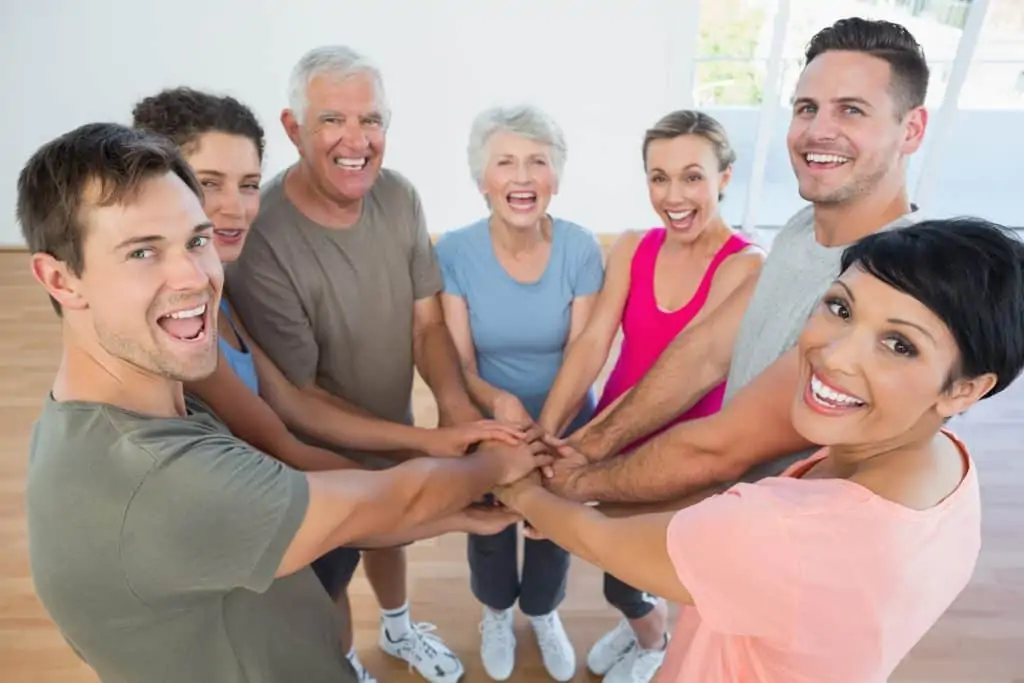
Don’t look for overnight success
Stop looking for instant gratification.
There are some immediate benefits of exercise both physically and psychologically, including improved thinking and cognition, decreased anxiety, and improved sleep.
Other benefits take time and are the cumulative result of a sustained healthy habit.
Manage your time & priorities
With all the convenience we have nowadays, we’ve somehow become a society obsessed with being busy (like it’s some new status sign of success), but also really great at wasting time.
“Busyness” doesn’t mean you’re productive. Spoiler alert, multi-tasking is one of those things that makes you feel busier than you are.
Guess what, nobody has enough time. And we all think we’re busier than everyone else.
Fit people don’t magically have more time in the day. They just prioritize their workout. It’s not selfish to rank your health as one of your top priorities.
Many tasks can wait, and no one will even notice if they don’t get done.
Key takeaways
Many people fail at a consistent fitness program by choosing the wrong activities, setting unrealistic goals, and failing to understand how to move their bodies in the right way. This can lead to disliking exercise. But you can change all that.
Physical activity has so many wonderful benefits to support your lifestyle and it’s not too late to start prioritizing your health.
Get the root of why you “hate exercise” and break the cycle by finding activities that work for you to start creating healthy habits.
This time, you’re going to be a success story! Send me an email and let me know how it’s going!
Keep moving!
Related articles:
- 4 Secrets of a Well-Rounded Fitness Program
- Best affordable physical therapy equipment for home
- Game-changing exercise equipment for small spaces
- 18 Low impact workout options to keep you moving
References
United States Department of Health and Human Services. (2018). Physical Activity Guidelines for Americans, 2nd edition [PDF file]. Retrieved from https://health.gov/paguidelines/second-edition/pdf/Physical_Activity_Guidelines_2nd_edition.pdf
Blackwell DL, Clarke TC. State variation in meeting the 2008 federal guidelines for both aerobic and muscle-strengthening activities through leisure-time physical activity among adults aged 18–64: United States 2010–2015. National Health Statistics Reports; no 112. Hyattsville, MD: National Center for Health Statistics. 2018.

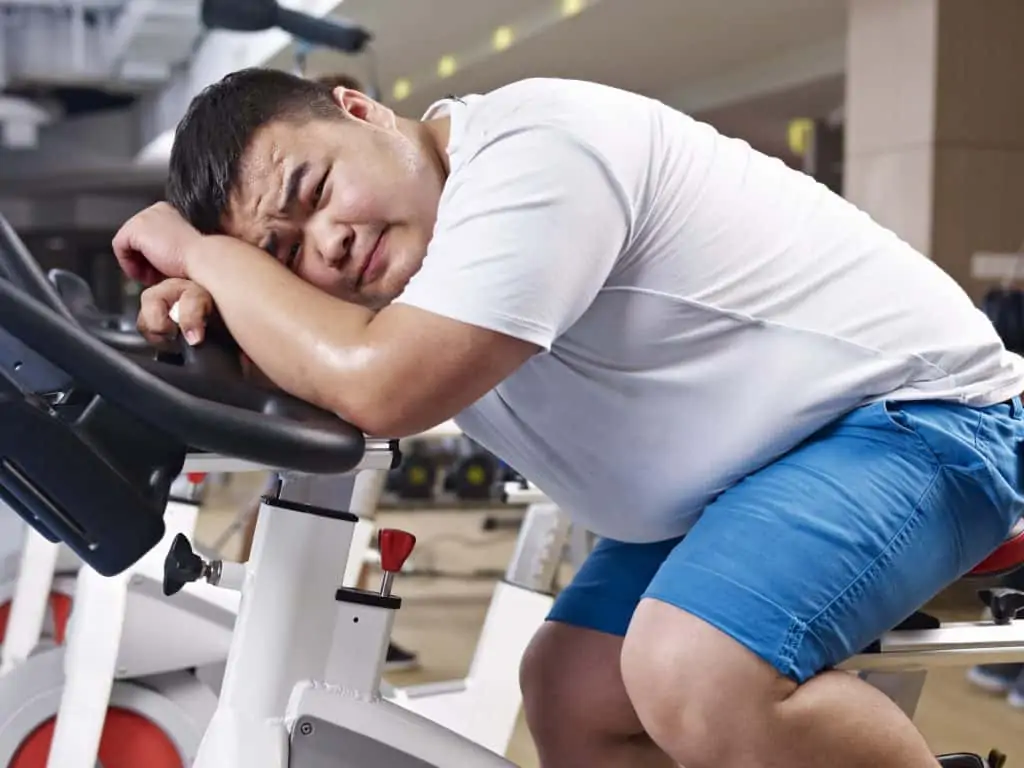
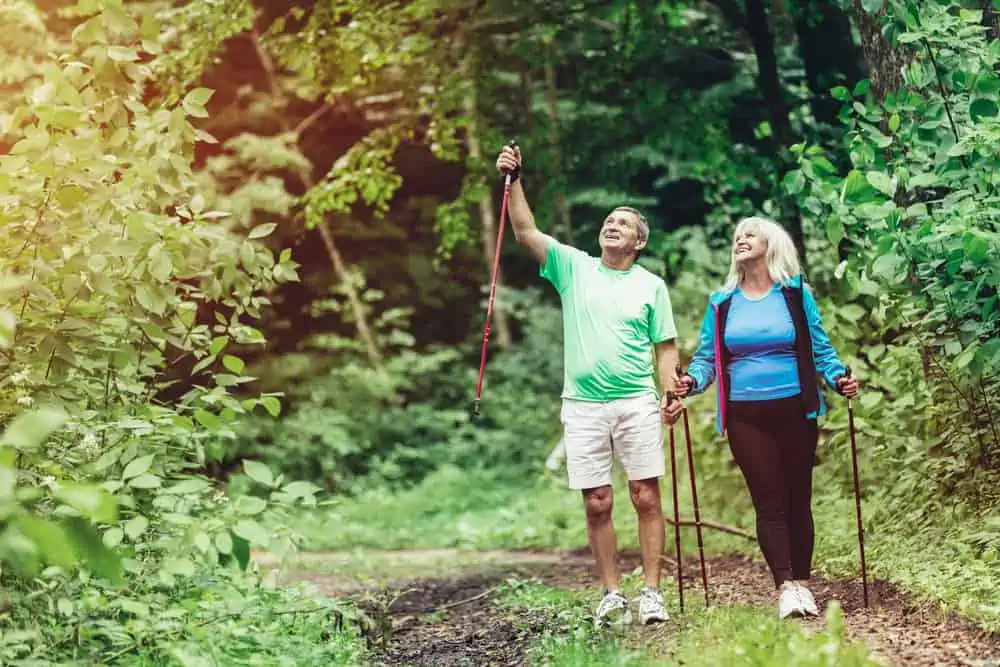
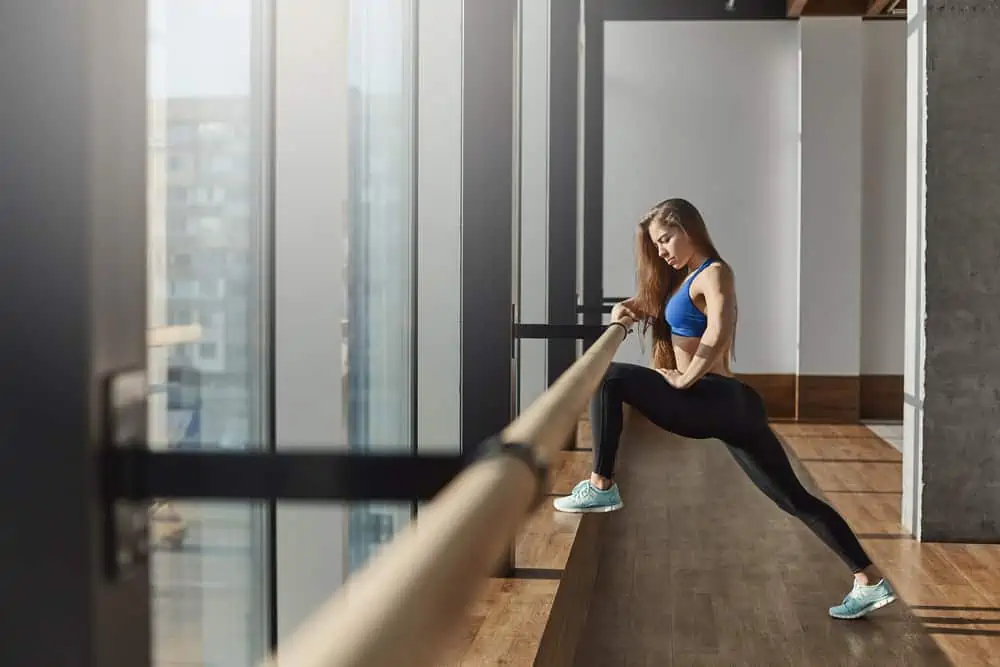

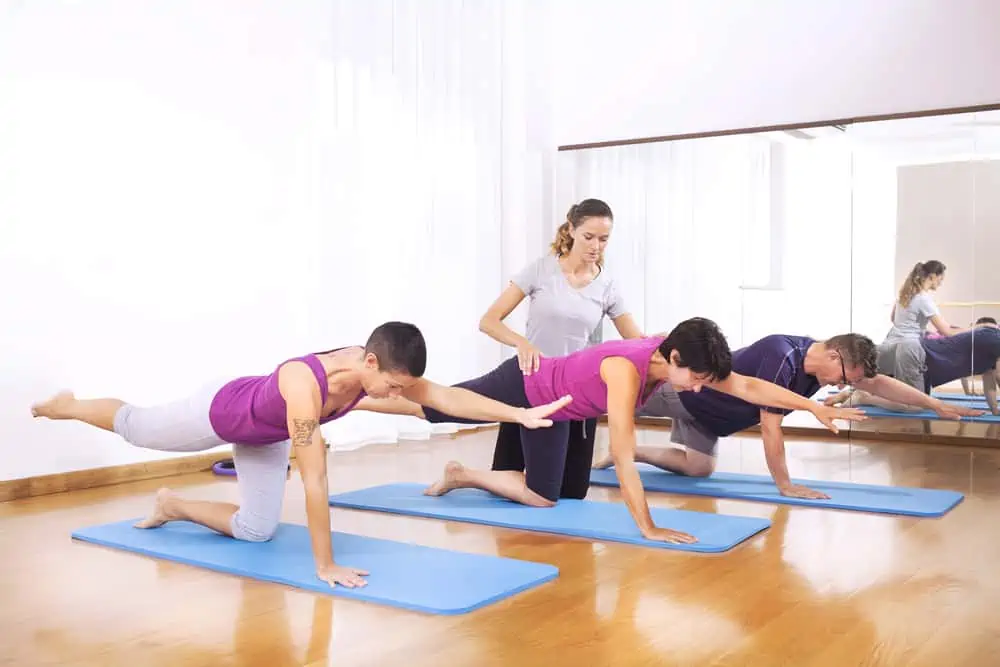
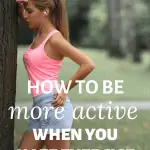
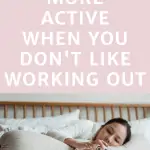
It’s so much harder to be active working from home, no trips to lunch or walking to meetings.
I can certainly appreciate that I hope some of the tips here help you get creative with new ways to stay active at home! Thanks for reading.
Great info and motivation. That’s something many of us need with being stuck at home for so many months.
Thank you, it’s so easy to become inactive staying at home all the time.